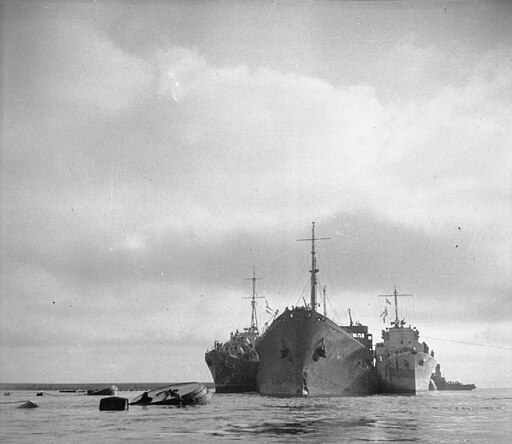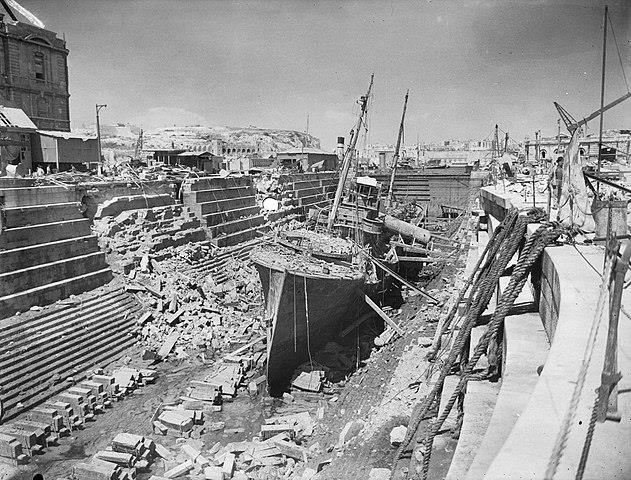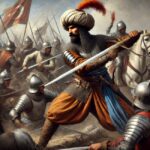| Malta Short Let: Cozy Stay in Gzira | |
|
Sliema Area Modern Designer Finished 2 Bedrooms + Games Room. First floor with Maltese Balcony Large back Terrace with swinging sofa Fully Airconditioned + Full Kitchen 3 TVs, including 65” with backlight. |
 |
|
Book Now: Google Travel | Direct (Cheapest) | Booking.com | Airbnb |
|
Introduction to Malta
Malta is a small island nation located in the heart of the Mediterranean Sea, south of Italy. Known for its sunny weather, rich history, and stunning landscapes, Malta offers a unique blend of culture and heritage. The island enjoys a Mediterranean climate, with hot, dry summers and mild, rainy winters, making it an ideal destination year-round. Malta is considered one of the safest countries in Europe (no more pirates! Discover more about Malta’s pirate-free safety status in Is Malta Safe?), with low crime rates and a welcoming atmosphere. Yes, Malta is indeed a country—an independent nation with a rich history that spans thousands of years. Learn more about Malta’s geography here: Where is Malta?.
5,200 BC – The Arrival of Stone Age Farmers
The story of Malta begins over 7,000 years ago when Stone Age farmers arrived on the islands around 5,200 BC. These early settlers were skilled in agriculture and left behind fascinating evidence of their lives, from tools to early forms of settlement structures.
3,600 – 2,500 BC – The Age of Temples
Malta’s most remarkable contribution to prehistoric civilization came during the temple-building period. Between 3,600 and 2,500 BC, massive megalithic temples were constructed, the likes of which include the Ggantija Temples and Hagar Qim. These temples are considered some of the oldest freestanding stone structures in the world, even predating the pyramids of Egypt.
800 BC – The Phoenicians Arrive
Around 800 BC, the Phoenicians, master sailors from what is now Lebanon, made Malta an important trading post. They brought their seafaring expertise and introduced the island to the wider Mediterranean culture, which deeply influenced Maltese society.
400 BC – Carthaginian Control
By 400 BC, the city-state of Carthage (located in present-day Tunisia) ruled Malta. The Carthaginians further expanded Malta’s importance as a Mediterranean outpost, shaping the local culture.
218 BC – The Roman Conquest
In 218 BC, during the Second Punic War, the Romans took over Malta. Under Roman rule, the islands experienced prosperity and were granted the status of “Foederata Civitas” (a federated state), allowing a degree of self-governance. According to tradition, it was around 60 AD that the Apostle Paul was shipwrecked on Malta, an event that eventually led to the Christianization of the islands.
868-870 AD – The Arab Attempts and Conquest of Malta
The Arab conquest of Malta in 870, following a failed attempt in 868, highlighted Malta’s strategic importance in the central Mediterranean. This invasion led to the destruction of its Byzantine fortifications, harsh treatment of local Christian populations, and cultural transformations, including the introduction of new agricultural and architectural practices. These changes laid a foundation for Malta’s later historical evolution under Norman and Knightly rule.
870 AD – The Arab Invasion: A Cultural Turning Point
In 870 AD, Malta faced a major turning point when the Aghlabids, part of the Arab world, ended Byzantine rule over the island. Learn more about the lasting impact of Arab rule on Malta in Roots of Resilience: The Lasting Impact of Arab Rule on Malta. This wasn’t just a military conquest; it marked the start of Malta’s transformation into a cultural mosaic. The Arab influence reshaped Malta’s language, architecture, and traditions. The city of Mdina, often called the “Silent City,” bears echoes of this period, its winding streets reflecting a rich Islamic heritage. Today, you can sense this influence in the very DNA of Maltese culture, from the Arabic roots in the language to the architecture that still dots the island.

1091 – Norman Conquest: Back to Europe
Fast forward to 1091, and Malta becomes the target of Count Roger I of Normandy. Under Norman control, Malta was reoriented towards Europe, integrating into the growing Norman Kingdom. The Normans left a deep imprint on Malta, strengthening its Christian identity and strategic importance as a European outpost. Fort St. Angelo, still standing strong in Birgu, is a symbol of the early Norman military might that established Malta as a key Mediterranean stronghold. Learn more about the historical significance of the Three Cities and their fortifications by visiting Bormla’s Fortifications: A History of Strategic Defense.
1266 – French Rule and the Rise of Aragon
In 1266, Charles of Anjou expanded his French domain to include Malta, bringing heavy taxation and unrest. By 1283, the island was drawn into the War of the Sicilian Vespers and subsequently fell under Aragonese influence, linking Malta’s fate to that of Sicily. Learn more about how the Maltese attacked the French in The Blockade of the Three Cities by the Maltese vs. the French.
1530 – Arrival of the Knights of St John
In 1530, the Spanish king gave Malta to the Knights of St John. This marked the beginning of one of the most iconic periods in Maltese history, as the Knights turned Malta into a formidable fortress, preparing the island for its critical role in the Great Siege of 1565. Discover why the Knights built the Three Cities, how they financed their military campaigns in Financing the War, and learn about The Three Cities Before the Knights. Discover why the Knights built the Three Cities and how they financed their military campaigns in Financing the War.

1565 – The Great Siege of Malta
The most defining moment of Maltese history came in 1565 with the Great Siege of Malta. The mighty Ottoman Empire attempted to wrest control of the island from the Knights of St. John, who, alongside the Maltese people, mounted an extraordinary defense. Against all odds, they emerged victorious, a feat that still resonates with national pride today. Learn more about how people managed to keep running businesses despite these challenges in Running a Business in the Three Cities During the Period 1530-1630. Learn more about how the Knights capitalized on Ottoman mistakes in Turning the Tide: How the Knights Exploited Ottoman Mistakes During the Great Siege of Malta 1565.
Collapse of the Knights and learn more about the aftermath in The Knights of Malta After the Great Siege and The Ottomans After the Great Siege of Malta

1693 – The Great Earthquake
In 1693, Malta was struck by a powerful earthquake that caused significant damage, including in Mdina and other key sites. Despite the devastation, the Maltese resilience shone through, as they rebuilt and continued to fortify the island.
1798 – Napoleon, the British, and the Winds of Change

Malta’s location ensured that peace was always temporary. In 1798, Napoleon invaded Malta, ousting the Knights of St. John and ushering in a short-lived French occupation. The French introduced significant reforms, including the abolition of slavery, the Inquisition, and other outdated institutions that had held Malta back. Learn more about this significant event in The French Invasion of Malta: A Turning Point and the end of the Inquisition in The Inquisition in Malta. The Maltese, however, were not inclined to submit quietly. With the help of the British, they resisted French rule, eventually leading Malta to become a British protectorate by 1800. This period of resistance is detailed in The Blockade of the Three Cities by the French: Malta’s Fight for Freedom.
The British Empire and World Wars
Malta formally became a British Crown Colony in 1814 under the Treaty of Paris. The island’s Grand Harbour became a crucial military base, making Malta an essential link in the British Empire. During World War II, Malta faced one of its darkest chapters, enduring over 3,000 air raids by Axis powers. Yet the Maltese spirit never wavered. The island became a symbol of resilience, earning the George Cross for its bravery. Visit the Malta at War Museum in Vittoriosa to get a glimpse of the incredible courage shown by the Maltese during these perilous years. Malta’s resilience during World War II, particularly the role of the Three Cities, is captured in The Heart of Malta’s Resistance: How the Three Cities Sustained Malta During WWII Convoys.





Modern Times: Independence and Beyond
After World War II, Malta moved towards self-governance, achieving independence from Britain in 1964. Ten years later, in 1974, Malta became a republic, with Sir Anthony Mamo as its first President. The last British servicemen left the island in 1979, marking the end of Malta’s role as a military base. In 2004, Malta joined the European Union, followed by adopting the Euro in 2008, cementing its place in modern Europe.
Today, Malta is a thriving member of the European community, known for its vibrant culture, economic development, and strategic role in Mediterranean politics. The island continues to be a bridge between Europe, North Africa, and the Middle East, a role it has played for thousands of years.
What Does the Future Hold?
The world today is vastly different from the one that saw Malta changing hands again and again. The rise of long-range warfare, technological advances, changing alliances, and Malta’s integration into the European Union have all reduced the likelihood of another physical siege. However, the pattern remains: Malta’s strategic position still makes it an important player in the Mediterranean. Could new conflicts, perhaps over resources or regional influence, put Malta back in the crosshairs sometime between 2040 and 2140? Only time will tell.
One thing is clear—Malta’s history of resilience in the face of adversity is a powerful story that continues to inspire. The island’s ability to adapt, survive, and even thrive through countless conflicts is a testament to the strength and courage of its people. As we look to the future, we can only hope that Malta’s next chapter will be one of peace, progress, and continued cultural enrichment.
Explore Malta’s Resilient Past
Malta’s rich past is not just confined to history books; you can experience it firsthand today. For those who love history, Malta is an open-air museum, each stone telling a story of triumph, struggle, and endurance. From the fortified walls of Mdina to the bastions of Valletta, and the solemn Citadel in Gozo, there’s no shortage of historical treasures waiting to be explored. Come walk in the footsteps of knights, conquerors, and survivors, and discover the island that has stood the test of time like no other.
Malta’s story is not just about the past—it’s a living, breathing testament to resilience, and it leaves us all wondering: what will the next chapter hold?
- Kayaking: Paddle through the crystal-clear waters around Malta’s coast and get a unique perspective of the island’s fortifications. Discover some of the top kayaking spots and their historical significance in Kayaking Around Malta.
- Hiking: Trek through Malta’s scenic countryside, discovering old chapels, breathtaking views, and historical sites along the way. Malta offers numerous hiking trails that weave through both natural and historical landmarks, giving you a true taste of the island’s rich heritage.
- Senglea, Birgu, and Bormla: Wander through these cities to truly appreciate the legacy of the Knights and their fortifications. Explore more about each city individually: Senglea, Birgu, and Bormla. These areas are part of the Three Cities and offer a unique view into Malta’s past, showcasing impressive architecture, narrow streets, and a sense of history at every turn. Visit The History of the Three Cities for an in-depth look at their significance. These areas are part of the Three Cities and offer a unique view into Malta’s past, showcasing impressive architecture, narrow streets, and a sense of history at every turn. Visit The History of the Three Cities for an in-depth look at their significance.
- Learn About the Knights: Dive into the rich history of the Knights of Malta, whose presence shaped much of Malta’s culture and architecture. You can visit historical sites, museums, and fortresses that tell the story of these famed warriors. Read more about their enduring legacy in The Knights of Malta.
- Wine Tasting: Enjoy local Maltese wines at various vineyards. Learn more about Maltese wine culture and find some of the best wineries to visit in Wineries and Wine Tasting in Malta. The unique blend of flavors reflects Malta’s diverse history.
- Explore Fortresses: Visit iconic fortresses like Fort St. Angelo or Fort St. Elmo to get a sense of Malta’s strategic military history. For more on the history of these fortifications, visit Fortress Malta: A History of Sieges and Survival.
- Swim at Manoel Island: Take a dip in the waters surrounding Manoel Island, a location steeped in history and beautiful views. Discover more about Manoel Island’s fascinating past in Lazzaretto of Manoel Island.
- Visit Sliema: Explore the bustling town of Sliema, known for its seafront, shopping, and dining experiences. Discover more about things to do and day trips starting from Sliema in 20 Day Trips from Sliema. Stroll along the promenade and enjoy views of Valletta, blending modern vibrancy with historical depth.
- Rock Climbing: Test your skills at some of Malta’s fantastic climbing spots. Learn more about Malta’s adventurous outdoor activities in Rock Climbing in Malta. The limestone cliffs provide stunning backdrops, and there are options for all skill levels, from beginners to advanced climbers.
- Mountain Biking: Hit the trails and enjoy Malta’s rugged terrain. Learn more about some of the best trails and biking routes in Mountain Biking Malta. It’s a great way to explore the island’s natural beauty.
- Self-Guided Tour: Discover Malta at your own pace with a self-guided tour, exploring landmarks, historical sites, and hidden gems across the island. Check out Self-Guided Tour of Malta for routes and details.
- Malta’s Big Five: Experience the best of Malta by visiting its top five attractions, perfect for travelers seeking a comprehensive glimpse of the island’s unique offerings. Learn more in Malta’s Big Five.
- Scuba Diving: Discover the wonders beneath Malta’s surface with an unforgettable scuba diving adventure. Malta is home to some of the Mediterranean’s most diverse marine environments, including vibrant coral reefs, fascinating caves, and a number of historic shipwrecks that tell stories of the island’s past. Popular diving spots like the Blue Hole in Gozo and the Um El Faroud wreck offer opportunities for both beginner and advanced divers to experience the rich underwater landscapes of Malta. For more information, explore Scuba Diving in Malta: A Primer to the Best Underwater Adventures..








